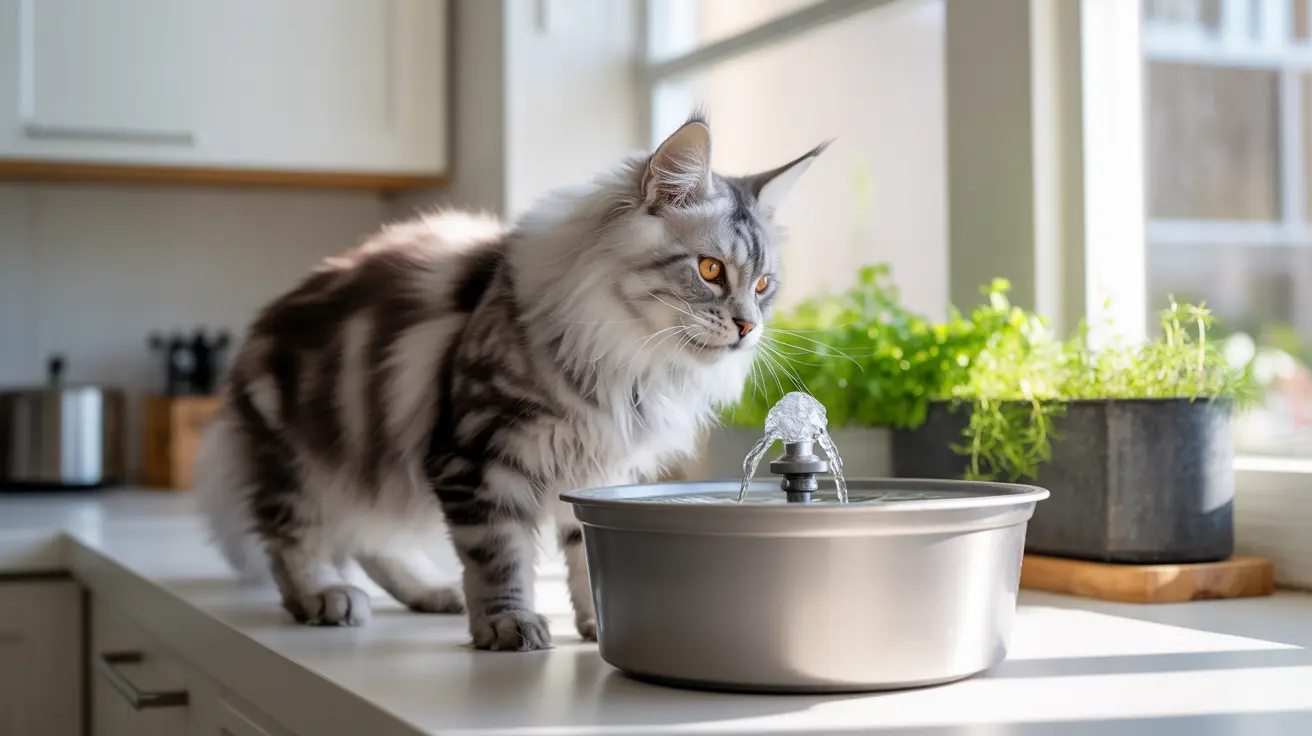Understanding When Your Cat Has a Fever
When your beloved feline companion isn't feeling well, knowing how to provide proper care is essential. A fever in cats can be concerning, as it often indicates an underlying health issue that needs attention. While home remedies can offer temporary relief, understanding when and how to use them safely is crucial for your cat's wellbeing.
Normal cat body temperature ranges from 100.4°F to 102.5°F (38°C to 39.2°C). Anything above this range indicates a fever, which can be caused by infections, inflammation, or other health conditions. Recognizing the signs and knowing how to respond appropriately can make a significant difference in your cat's recovery.
Safe Home Care Methods for Feline Fever
Hydration Support
One of the most important home remedies for cat fever is ensuring proper hydration. Place multiple water bowls around your home and consider these strategies:
- Offer wet food to increase moisture intake
- Add a small amount of low-sodium chicken broth to water
- Use pet water fountains to encourage drinking
- Place ice cubes in water bowls to maintain freshness
Temperature Management
While managing your cat's fever at home, focus on creating a comfortable environment:
- Keep your cat in a quiet, temperature-controlled room
- Use a slightly dampened cool cloth on paws and ears
- Avoid extreme temperature changes
- Provide a cozy, clean bed away from drafts
Encouraging Food Intake
Cats with fever often lose their appetite, but nutrition is crucial for recovery. Try these approaches:
- Warm wet food slightly to enhance aroma
- Offer small, frequent meals
- Use high-quality, easily digestible foods
- Hand-feed if necessary
When Professional Care Becomes Necessary
While home remedies can provide comfort, certain situations require immediate veterinary attention:
- Temperature exceeding 104°F (40°C)
- Fever lasting more than 24 hours
- Severe lethargy or weakness
- Difficulty breathing
- Refusal to eat or drink for over 12 hours
Frequently Asked Questions
What are the safest home remedies to help a cat with a mild fever?
The safest home remedies include providing fresh water, maintaining a comfortable environment, using cool cloths on paws and ears, and ensuring proper nutrition through wet food and broths. Never use human medications or extreme temperature treatments.
How can I accurately check my cat's temperature at home to know if it has a fever?
Use a digital rectal thermometer specifically designed for pets, applying petroleum jelly for lubrication. Digital ear thermometers made for pets are also available but may be less accurate. Always be gentle and have someone help restrain your cat if needed.
When should I stop home care and take my cat to the veterinarian for a fever?
Seek immediate veterinary care if your cat's temperature exceeds 104°F, if the fever persists for more than 24 hours, or if you notice severe symptoms like difficulty breathing, extreme lethargy, or refusal to eat or drink.
What foods and hydration tips can help support a cat that has a fever?
Offer wet food, pet-safe broths, and multiple water sources. Warm food slightly to increase aroma and appeal. Consider ice cubes in water bowls and pet fountains to encourage drinking. Feed small, frequent meals of highly digestible food.
Why should I never give my cat human fever medications like acetaminophen or ibuprofen?
Human fever medications like acetaminophen and ibuprofen are extremely toxic to cats and can cause severe organ damage or death. Cats lack the necessary enzymes to process these medications safely. Only use medications specifically prescribed by your veterinarian.
Conclusion
While home remedies can provide comfort for a cat with fever, they should never replace professional veterinary care. Focus on keeping your cat comfortable, hydrated, and monitored while seeking appropriate medical attention. Remember that early intervention often leads to better outcomes for your feline friend.






